Sedums are amazing. Such fascinating foliage and so easy to care for. We’re taking closer look sedum plants, where to buy them and how to grow them.
What are sedum plants?
Sedums are what we call succulent plants. They have thick, fleshy leaves with a tough skin that helps them to cope well with drought. Sedums are from the genus Crassulaceae and are related to Aloe Vera and pineapple plants.
Flowers are usually white, yellow or various shades of pink. Each individual floret has five petals, arranged in a star shape. They open wide to allow bees and butterflies easy access to the rich nectar. Foliage colour varies from a grey-green to a really deep green and the leaves can be bean-shaped, flattish or roundish. In short, it’s a pretty diverse species.
There are around 400 different sedum species and countless varieties within each species. Not all of them can live outside all year round in the UK. So for this blog, we’ll look at the sedum plants that do well in this country, and showcase Turfonline’s impeccable range of sedum flower mats.
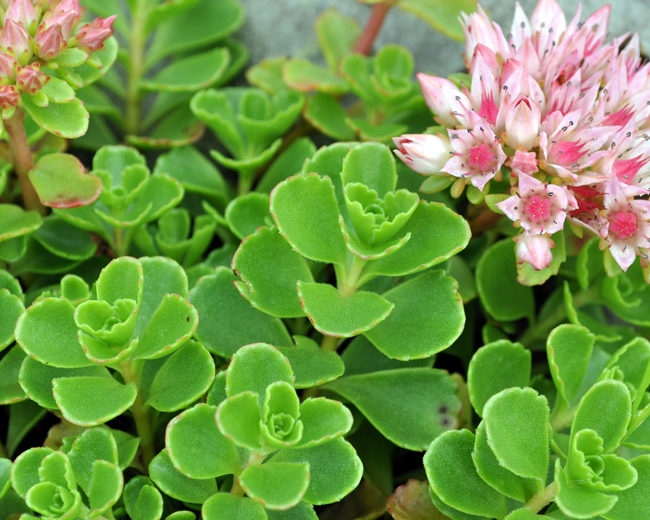
Sedum spurium. Beautiful fleshy leaves and those stunning flower heads with lots of florets arranged together to make a plate-like bloom.
Where to grow sedum plants?
Sedums like well-drained soil – but it doesn’t need to be deep because they’re very shallow rooted. They also like – no – need – sunshine. Sedum plants just will not thrive in deep shade. Unless they have sun for at least half a day, they’re just not as happy as they could be. Neither do they like to have their feet wet for long periods of time? They’ve evolved to live in poor soil with few nutrients and not so good water retention.
In the wild, you’ll typically find sedums on mountainsides, on the Norfolk Breckland (where the soil is very sandy) and growing in cracks between rocks. The Romans used to call them “wall pepper” because they have a bitter taste and grow on walls and seemingly soil-less surfaces.
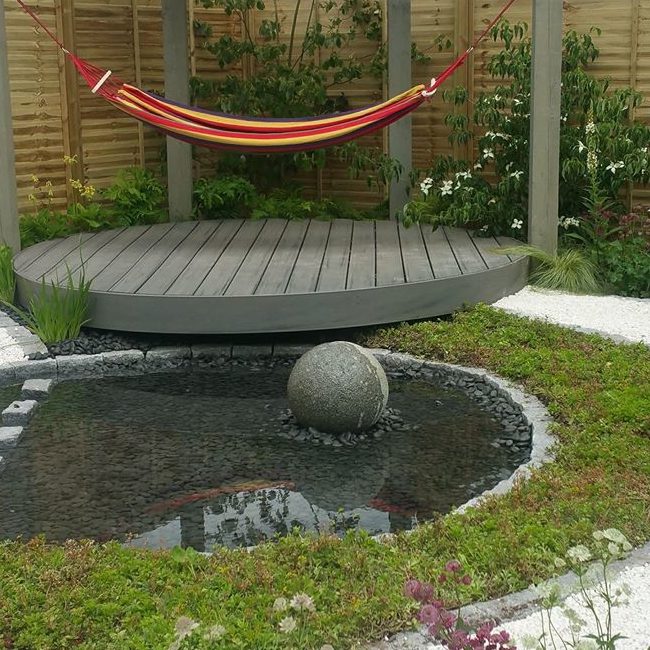
The Serenity Garden at Gardeners World Live show in 2017. Sedum plants are used to surround this lovely still pond. The colour and texture of the foliage are quite restful and definitely low maintenance. There’s also a small sedum green roof on the pergola – but it’s hard to see in this picture
Where do sedums grow well?
- In an alpine trough
- A rock garden
- As groundcover plants
- In pots and planters
- Sunny window box
- On top of a bird feeder
- On a living green roof
- Amongst other herbaceous bedding
- In a “dry garden”
- On top of a wall
- In the cracks of a drystone wall
Growing sedum plants in the UK
First of all, do some research and discover which species of sedum plants are frost hardy in the UK (unless of course, you are able to protect the plants should we have a harsh winter.)
My favourites are
- Sedum Acre – which is native to the UK
- S. Album – another native
- Sedum Reflexum. Not native but it’s been in this country since Medieval times when it was imported as a salad plant. I love the look of the plant but believe me, it doesn’t taste nice and I won’t be adding it to my BLT at lunchtime.
- Sedum Spurium. Broad leaves and large pink flowers
- Sedum Telephium – also known as orpine. A taller species that has lots of different varieties. I have the one with pale pink flowers and grey-green leaves in my garden. My honeybees treat it as a fast-food restaurant. They absolutely adore it. There’s also a purple-leaved variety that I’d like to get my paws on.
- Sedum Kamchaticum. Bit of a mouthful to pronounce but a lovely plant with happy yellow flowers.
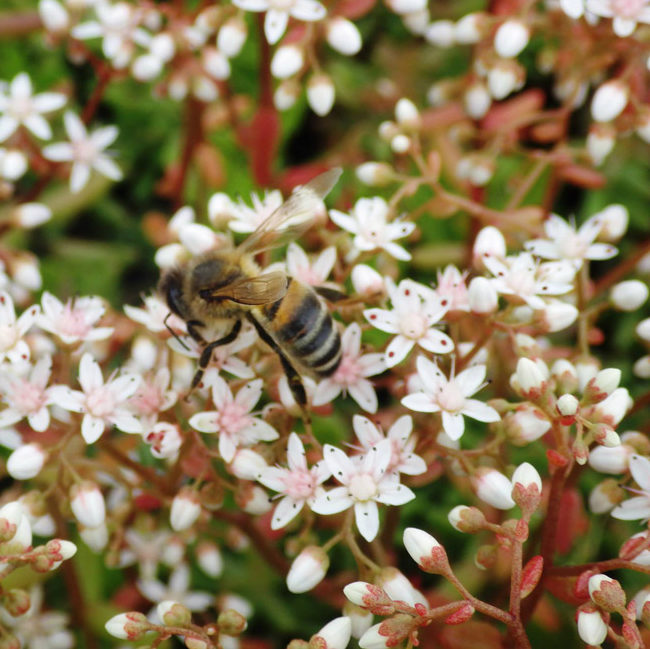
Sedum album flowers providing a meal for a honey bee.
I should have mentioned before that all of these sedums are remarkably disease-free and very easy going.
Make sure that you have prepared a sunny spot for them in the garden where the soil is free-draining (dig in plenty of gravel). Then all you have to do is plant the plants, water them in and watch them grow. I like to give them a high phosphorus feed in springtime to encourage flowering and apart from that, they need very little attention.
Sedums are an ideal plant for people who can’t spend a lot of time gardening but still appreciate the beauty of living plants. They’re also great for growing less accessible places like roofs.
I’m a big fan of green roofing. I love the way they look and I especially like their potential to improve air quality, reduce heating bills and support wildlife.
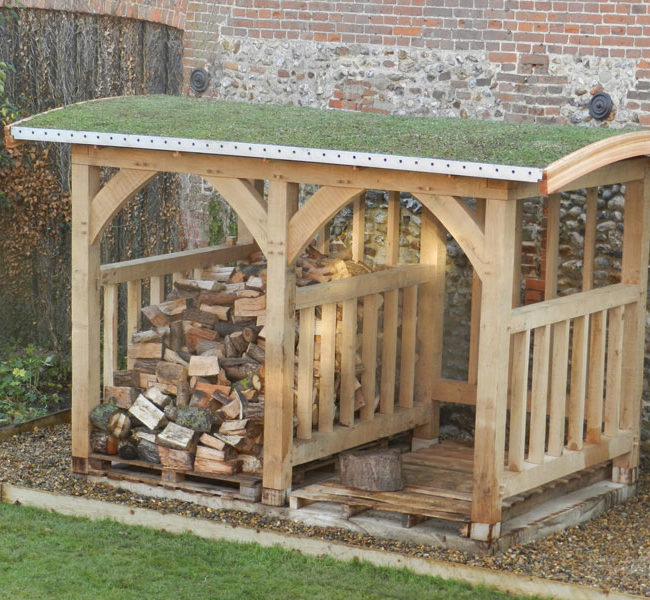
Read more about green roofs here
Where to buy sedum plants?
Individual plants are available from most garden centres and they’re nearly always reasonably priced.
If you prefer to buy online, there’s a nice selection at www.simplysucculents.co.uk
But for covering an area quickly and effectively, I thoroughly recommend using sedum blankets. All the planting has been done for you. Your main job is to unroll the blanket onto a suitable surface and water it in. Hey-Presto! Instant coverage for your shed roof, your flower beds, your manhole covers, pond edging or wherever you choose to use it.
Find out more about installing and using sedum blankets here
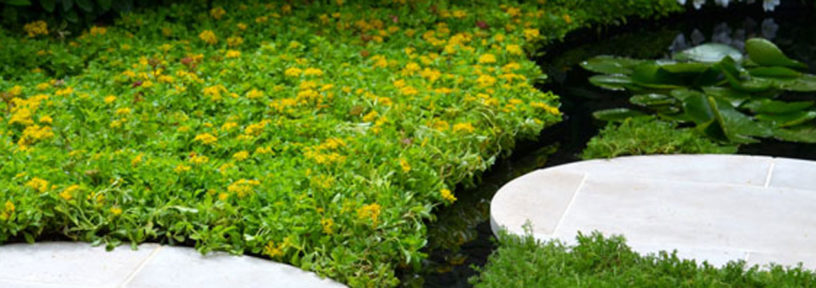
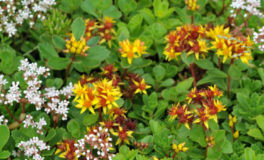 How to grow groundcover plants
How to grow groundcover plants  Great groundcover ideas for semi-shade
Great groundcover ideas for semi-shade 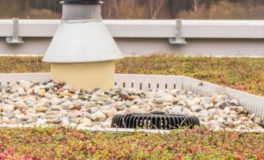 Sedum Species
Sedum Species 

